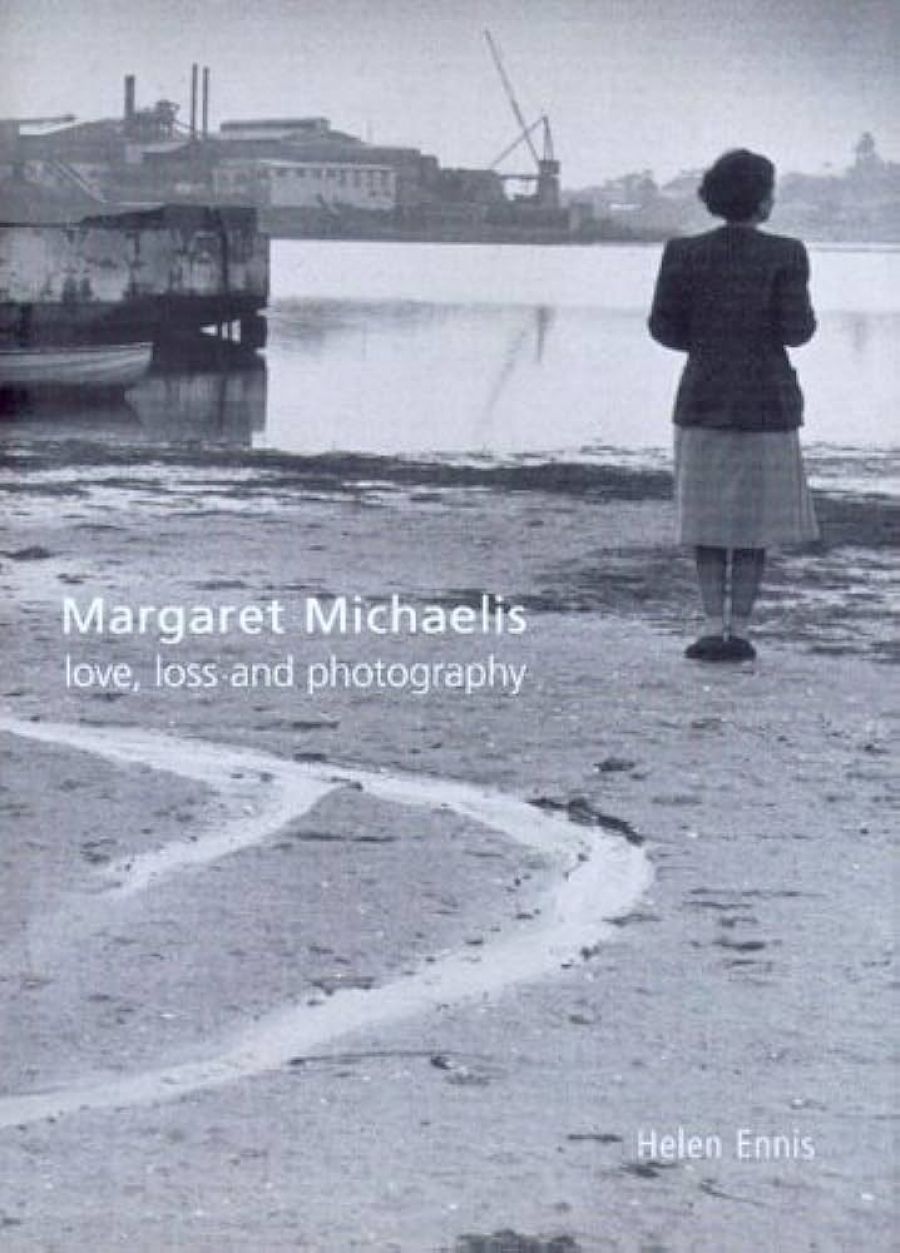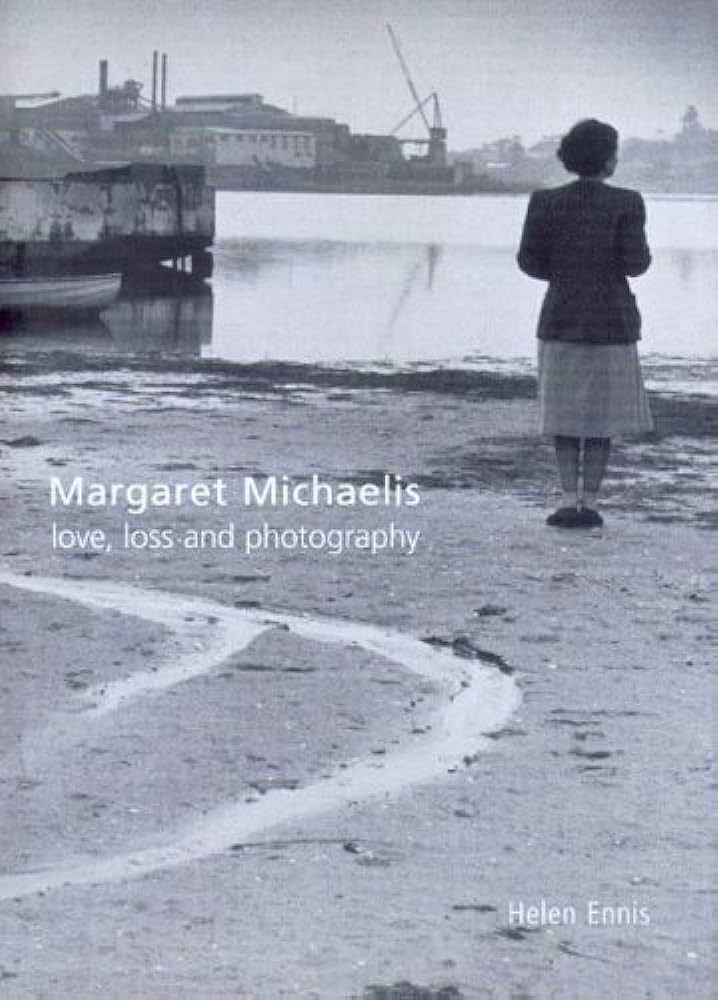
- Free Article: No
- Contents Category: Biography
- Review Article: Yes
- Article Title: Tones of emigration
- Online Only: No
- Custom Highlight Text:
Margaret, Margarethe, Grete, Gretl, Gretele are all the same person: the biographer Helen Ennis prefaces her book and arouses our curiosity with the note that she has used the names depending on the context. Margaret Michaelis was born Margarethe Gross in 1902, in Dzieditz (Austria, later Poland); when she died in 1985, in Melbourne, she was known as Margaret Sachs. She studied photography at the Institute of Graphic Arts and Research in Vienna. In the late 1920s she worked in studios in Prague, and then Berlin. There she met and married Rudolf Michaelis, an archaeological restorer and an anarchist. After the Nazi takeover, the couple fled to Spain in 1933; they separated soon after their arrival. In Barcelona, and after 1939 in Sydney, Michaelis managed her own photographic studios. In 1960 she married Albert Sachs, a Viennese-born émigré and moved to Melbourne.
- Book 1 Title: Margaret Michaelis
- Book 1 Subtitle: Love, loss and photography
- Book 1 Biblio: National Gallery of Australia, $49.95 hb, 250 pp
- Book 1 Cover Small (400 x 600):

- Book 1 Cover (800 x 1200):

In the early 1980s Michaelis’s work was included in the touring exhibition Australian Women Photographers 1890–1950, which prompted Helen Ennis, Curator of Photography at the National Gallery of Australia, to seek out Margaret Michaelis-Sachs in 1985 in Melbourne, where she lived in St Kilda at the Montefiore Home for the Aged. Their encounter precipitated the writing of this book, an insightful and intricate piecing together of images and biography. The main collections of the work of Margaret Michaelis are in the National Gallery of Australia, and in major photographic and architectural archives in Barcelona.
Ennis discovered notes and letters that suggested Michaelis had ‘a messy, ordinary yet extraordinary past that had a multitude of missing threads. Tantalisingly they offered the possibility of a narrative that the photographs alone could not.’ With sparse biographical leads and great interpretative energy, Ennis establishes segments of Michaelis’s life in Austria, Germany, Poland, Spain, and Australia. They appear like very different worlds – privately, culturally, and politically – each uniquely placing Michaelis in a time and place and putting her to the test, almost as if she were a fictional heroine, with more than new languages and adaptations of her name to signify her ingenuity. Most importantly, Michaelis left a rich photographic record of her travels into and between these worlds.
As an émigré, refugee and photographer, Michaelis’s life was itinerant. But within this maelstrom, her work often sought its opposite. She captured moments of concentration, of direction and purpose, of stillness: interiors, for example, such as one of an elderly couple, he reading, she sewing; or the flawed perfection of a face, or a hand-thrown jug; the mass and shadow of a modernist building, or a kitchen sink; an airborne dancer held mid-leap; or ‘The arrival of the International Red Cross at Portbou 1936’. It was said that she was so attuned to the sequences of movement that, in the process of photographing dance she could anticipate its climax. Michaelis’s work draws its aesthetic from this confluence of movement and moment.
Ennis points out that, while Michaelis was to some extent influenced by the boldness of contemporary photographic trends, she did not pursue ‘the radical formal experimentation advocated by László Moholy-Nagy and others associated with the Bauhaus in Germany … Instead, she developed an approach that can best be described as social documentary, marrying the stylistic innovations of the New Photography to a social reformist and activist agenda’ and that ‘people and their environments … emerge as her principal subjects’. In her work – if not in her own life – Michaelis sought and held on to moments of intimacy. Therein lies the story of love, loss and photography.
A painfully personal chapter entitled ‘Dear Gretl’, featuring the love letters between Margaret and Rudolf in all their yearning and immediacy, is followed by the book’s central chapter, ‘Lovers’. This examines Michaelis’s early portraits and develops the paradox that, when the photographer is also the photographic subject’s lover, even the most perfect composition cannot ‘adequately describe what was wanted’ because ‘desire cannot be caught by the hard facts of the photographic image; it slips away into another space that has no ties to concrete reality, leaving its trace in a lack or an absence’. In one portrait, Rudolf Michaelis looks straight at the camera; but his eyes are somehow indirect in their directness. Perhaps Margaret had caught a minuscule shift in his affections. It might explain why, in her self-portraits from that time, according to her biographer, she ‘shows herself to be serious-minded, verging on melancholic’, already testing closeness against distance, focus against memory. Premonition, melancholy and memory go hand in hand: after separating, Rudolf and Margaret lost contact for about thirty years; the chapter relating their reunion in the 1960s, and its reflection on their separate lives, forms the most moving section of the book.
In the revolutionary atmosphere of mid-1930s Spain, and simultaneous political accelerations across Europe, on a narrow rim between modernity and annihilation, ‘Michaelis developed a highly responsive, less formal way of working, taking her images quickly and achieving a far more urgent effect’, with compositions centred on physical labour and communal activity. Ennis points out that ‘from Michaelis’s perspective there was an important point to be made about the value of people working together and so she rarely isolated individual workers for the sake of pictorial drama’. Her restlessness increased; in about 1938 she even travelled to Poland. She escaped to England just in time; her parents perished in the Holocaust.
Michaelis arrived in Australia in 1939. Despite the fact that she was classified and treated as an ‘enemy alien’, with an ASIO file to prove it, and despite teetering for years on another existential rim, between independence and extreme loneliness, she would later acknowledge Australia as a place that had given her thirty-five years of peace. Aptly, the photograph on the cover of the biography is one of Michaelis’s most powerful images: a self-portrait in an industrial landscape on the Parramatta River, her back to the viewer, her gaze directed beyond the frame.
Ennis speculates that Margaret Michaelis might not have been an easy person to get along with. In Sydney she ‘apparently had little to do with the photographic community and was disparaging about the work of Max Dupain and other photographers’. This brings to mind Anthony Heilbut’s Exiled in Paradise (1983), where he described the gathering in the US, from the late 1930s until the end of the war, of ‘exceptionally dissimilar people [who] saw themselves as a group united in the pain and comedy of emigration – Albert Einstein, the brothers Mann, Bertolt Brecht, Fritz Lang, Hannah Arendt (to name only a few) – who conversed with great intelligence and wit, but above all, with harsh, almost anarchic irreverence in what Heilbut called a “universal tone of emigration”‘. Perhaps Michaelis talked just like that. Ennis argues that ‘unlike Max Dupain, Olive Cotton … and other Australian-born contemporaries, Michaelis’s practice did not proceed from a deep-rooted sense of home, place or nation … her photographs are distinguished by a quality of “un-homeliness” that has parallels in the work of other émigré photographers, notably [Wolfgang] Sievers and [Helmut] Newton’.
Ennis does not step back from her sometimes bristly subject. She writes herself into ‘that half-blind, intuitive search’ that is the drama of biographical research. Curiously, she ends the book with the same phrase with which she began, admitting that after all ‘I did not know Mrs Sachs well’. If at the beginning of her quest this meant that she only had the chance to meet Margaret Michaelis a few times before her death, and that their meetings were not especially intimate, as a conclusion this phrase resonates with a different kind of meaning: it is a despondent dénouement to an inspiring book, almost as if the biographer had succumbed to the inherent melancholy of her subject.


Comments powered by CComment